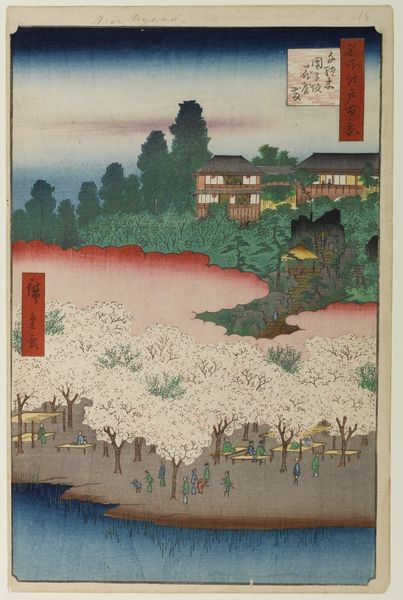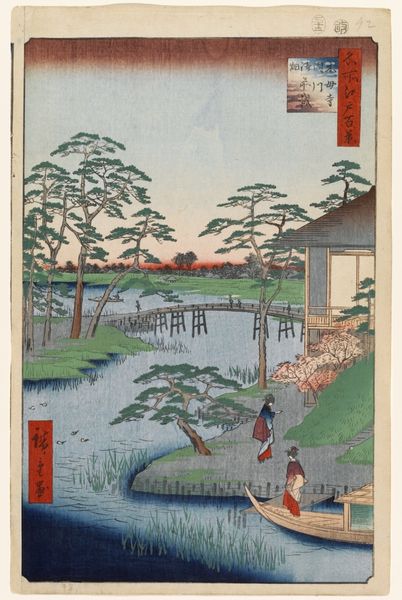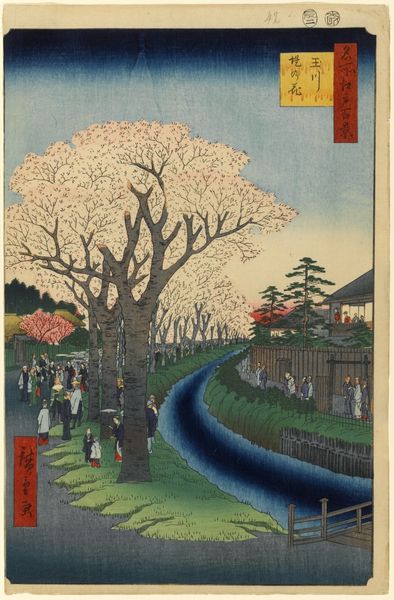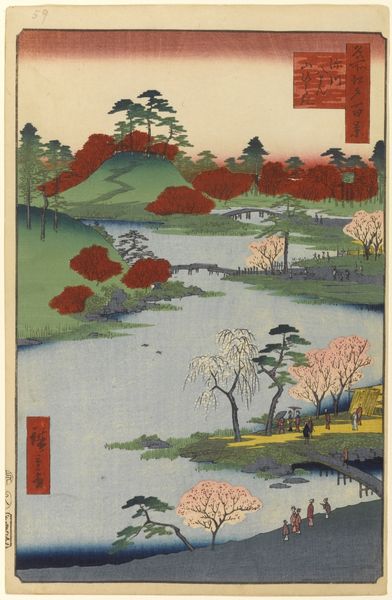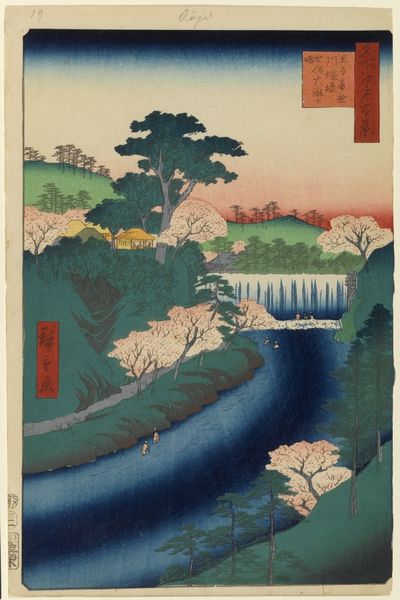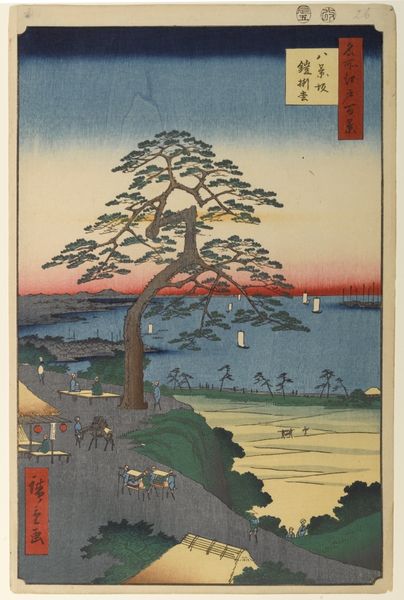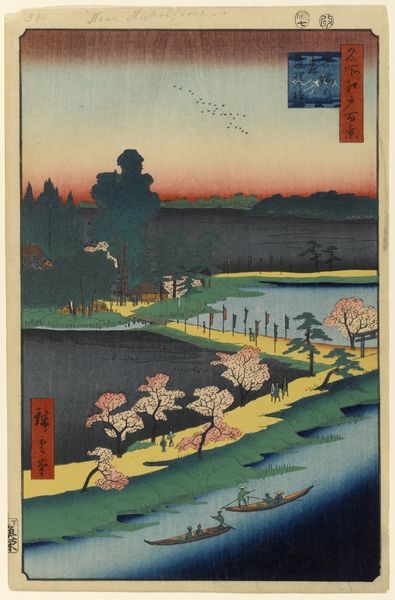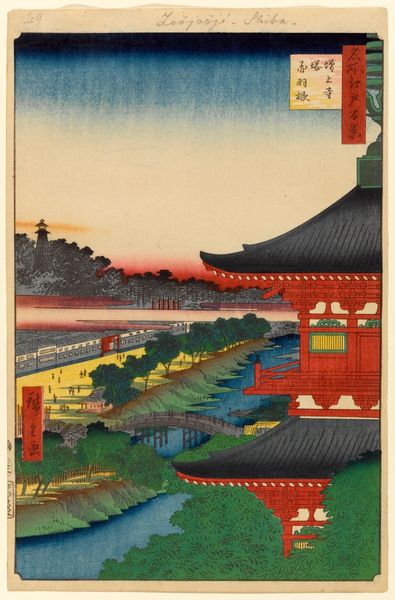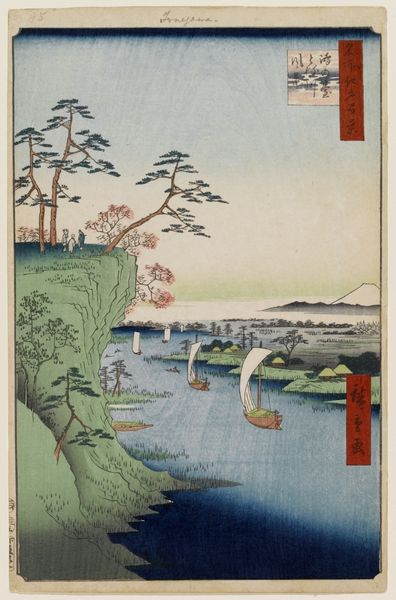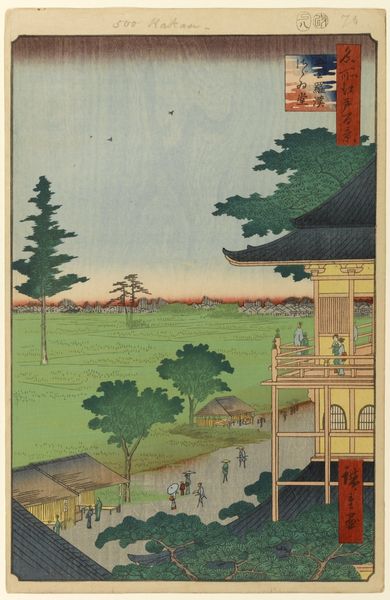
print, watercolor
# print
#
asian-art
#
landscape
#
ukiyo-e
#
figuration
#
watercolor
#
cityscape
#
watercolour illustration
#
watercolor
Copyright: Public domain
Curator: Let's explore Hiroshige's "Temple Gardens in Nippori," a woodblock print created in 1857 as part of his "One Hundred Famous Views of Edo" series. Editor: Oh, this is lovely! It's got this dreamy, slightly melancholic feel, doesn’t it? All these little figures strolling under blossoming trees. It's like a snippet of everyday life elevated to something special, wouldn’t you say? Curator: Absolutely. The print beautifully captures the cultural significance of cherry blossom season and how landscapes can become spaces for collective gathering. The positioning of the viewer also prompts discussions on who gets to enjoy such leisure and reflect on access to public spaces within socio-economic divides. Editor: It feels a bit like a memory, almost… the way the colors are, and how everything's slightly softened, hazy. Do you think he was trying to capture a specific feeling of nostalgia? Or perhaps highlight something about transience and ephemerality of our experiences? Curator: That's an interesting interpretation. Hiroshige masterfully uses perspective to lead the viewer's eye through the garden, drawing attention to the temple complex and the way architecture nests into nature, hinting towards political relationships and social order. His works often touched on themes of urban life, tradition, and social change during a time of intense societal shifts. Editor: Right. And look how he uses color - that striking contrast between the verdant green and the rosy hues of the cherry blossoms against that kind of hazy backdrop really amplifies everything. It's so evocative and expressive, in that subtle way typical of ukiyo-e art. Reminds me of quiet reflection by oneself… a sweet little pleasure of seeing blooms while life goes by, and realizing there are moments where simple happiness does exist for me! Curator: Indeed. As we consider the context of its creation, it speaks volumes about urban transformation, leisure, and aesthetic values during the Edo period. Editor: It’s that sense of capturing fleeting moments, simple pleasures, in an increasingly complex world...that's how art keeps life fresh, right? Curator: Absolutely. A visual meditation for modern contemplation, through inherited forms.
Comments
No comments
Be the first to comment and join the conversation on the ultimate creative platform.

